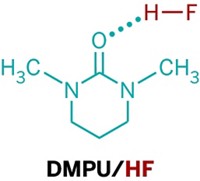Advertisement
Grab your lab coat. Let's get started
Welcome!
Welcome!
Create an account below to get 6 C&EN articles per month, receive newsletters and more - all free.
It seems this is your first time logging in online. Please enter the following information to continue.
As an ACS member you automatically get access to this site. All we need is few more details to create your reading experience.
Not you? Sign in with a different account.
Not you? Sign in with a different account.
ERROR 1
ERROR 1
ERROR 2
ERROR 2
ERROR 2
ERROR 2
ERROR 2
Password and Confirm password must match.
If you have an ACS member number, please enter it here so we can link this account to your membership. (optional)
ERROR 2
ACS values your privacy. By submitting your information, you are gaining access to C&EN and subscribing to our weekly newsletter. We use the information you provide to make your reading experience better, and we will never sell your data to third party members.
Inorganic Chemistry
Borylenes help cleave dinitrogen into ammonium
Reduction reaction using a main-group element takes place in a single flask at room temperature
by Bethany Halford
September 19, 2020
| A version of this story appeared in
Volume 98, Issue 36

The chemical reaction that splits dinitrogen and forms ammonia feeds the world by producing much of the global supply of fertilizer. But the process is energy intensive, requiring high pressure and temperatures in excess of 400 °C. Currently, the reaction is accomplished on an industrial scale with the help of iron catalysts. In earlier work, chemists led by Holger Braunschweig of Julius Maximilian University of Würzburg showed they could nab typically inert nitrogen with borylenes, reactive molecules with cores that feature reactive boron rather than a transition metal. Now, Braunschweig and coworkers show that they can cleave the borylene-bound N2 into ammonium chloride in a one-pot reaction that takes place at room temperature (Nat. Chem. 2020, DOI: 10.1038/s41557-020-0520-6). A solid-phase reductant and acid reagents spur the transformation (shown), which is a complex sequence of multiple reductions and protonations. Braunschweig’s group was able to isolate and characterize the intermediates en route to ammonium. The chemists attribute the success of the reaction to electron-rich boron’s unwillingness to accept more electrons, which is a stark contrast to many transition-metal complexes. This, they note, forces the reduction steps to occur on N2, ultimately leading to its breakup.





Join the conversation
Contact the reporter
Submit a Letter to the Editor for publication
Engage with us on Twitter